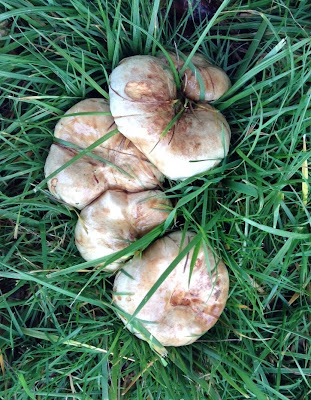 |
| Bionide Hot Pepper Wax |
 |
| Lilly Miller Chelated Iron Plus |
Hot Pepper Wax might be reduce risk for animals chewing on tree bark and stems. Two potential benefits. The wax might have antidessicant properties, reduce frost damage on immature fig shoots. Hot pepper extract might reduce chewing.
So I used up that spray on the fig trees, saturating the bark, the stem tips, and the tree wrap.
I would like to come up with a home remedy. If I can figure out a sprayable wax. Maybe the wax component is minimal, could as well be replaced with canola oil or neem oil.
This summer I noted Ning's ginkgo trees were not as green as the older one I planted. Multiple potential reasons. Ning's ginkgos were grown in container several years, until late last winter. To avoid too much root damage, we left potting soil pretty much in place. Mine was in more of a native soil. I don't remember - if I gave mine some epson salts in the early Spring, too. Maybe. And maybe some fish emulsion.
I also noted mulberry leaves were pale. That may be a mulberry tree characteristic. Or this variety. I was thinking, either magnesium (epson salts) or iron. Or both.
I also read about iron supplements for fig trees, on an internet forum. I was looking for some to apply during late winter. I found this container. So now that's taken care of too. I prefer completely organic, but then how do I dispose of this? It's not herbicide or pesticide, so I will use it up. There isn't much. Later find a completely organic source.
Also thinking about what to use for fungal spots on the bearded iris leaves. This year I did not use anything. The spots were significant by fall. Maybe it doesn't hurt anything. In previous years, neem worked well for leaf spot and for aphids. I found this partially used container. I can use it up in the Spring.
 |
| Green Light Neem Concentrate |




















